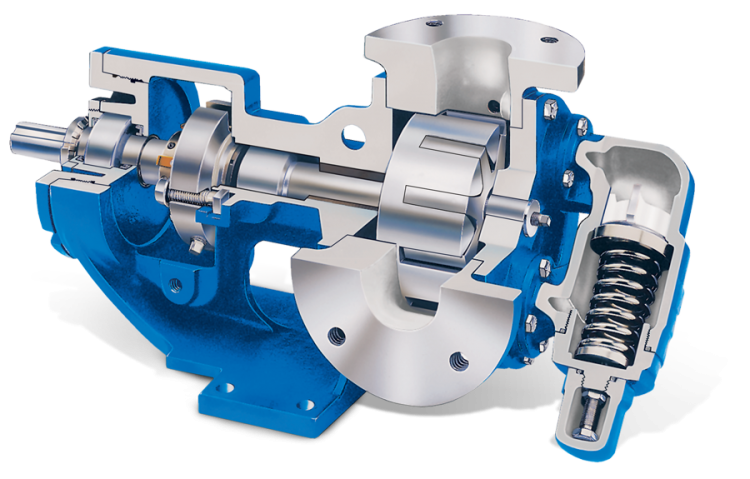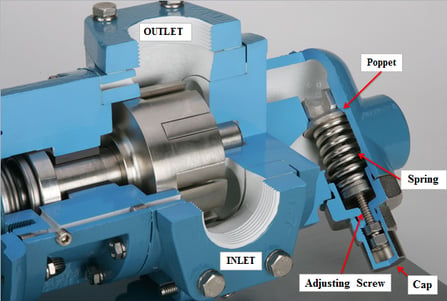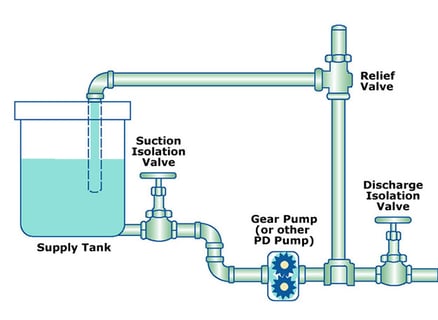
Blocked discharge lines and closed isolating valves are just a couple of ways pressure can build in a positive displacement pump. Unlike centrifugal pumps that will cavitate under these conditions, positive displacement pumps will continue to generate flow and pressure until something gives. Oftentimes it's the pump, resulting in costly component repair or replacement.
Relief valves can be an important measure when used within positive displacement pumps. These valves divert fluid flow as pressure builds in the discharge line of the pump, preventing failure. There are two types of relief valves, internal and external. Do you know which is right for your system?
When internal relief valves are used, they are integral to the pump construction. The figure below shows a cut-away of a Viking Pump gear pump with an internal relief valve.
As pressure builds in the discharge line and on the discharge side of the pump casing, force is distributed on the surface of the poppet. When the pressure exceeds the spring tension, which is set manually using the adjusting screw, the spring compresses allowing fluid to pass around the poppet. This channel then becomes the path of least resistance allowing fluid to flow in a continuous loop through the valve body and pump casing.
Due to pressure and friction, the fluid begins to heat up quickly because of its limited flow path. Typically as heat increases, viscosity lowers, and slip increases. Also, depending on the fluid, this rise in temperature could cause flashing (vaporization of the liquid) or other unwanted results.

The diagram below depicts a fluid system that is utilizing an external relief valve. The external relief valve serves a similar purpose as the internal relief valve, diverting fluid flow to alleviate excessive pressure in the discharge line. However, instead of being continuously circulated through the pump, fluid is diverted back into the feed tank or into the suction line upstream of the pump. This allows heat in the liquid to dissipate before returning to the pump, unlike internal relief valves.

There isn’t a clear cut answer to this question, as it depends entirely upon the system and media being used. Here are a few things to consider:
Having problems deciding which relief valve is right for you? Ask us about it! We gladly provide technical assistance to businesses and municipalities in Wisconsin and Upper Michigan.
These Stories on Pumps
Headquarters and Service Center
Located outside Green Bay, WI
707 Ford Street
Kimberly, WI 54136
920-733-4425
OptiFlow Design and Build Center
1002 Truman Street
Kimberly, WI 54136
920-733-4425
Burnsville Service Center
12265 Nicollet Avenue
Burnsville, MN 55337
952-444-1949
Grand Rapids Service Center
26489 Industrial Blvd
Cohasset, MN 55721
952-444-1949
© Copyright 2024. Crane Engineering. All Rights Reserved. Privacy Policy.